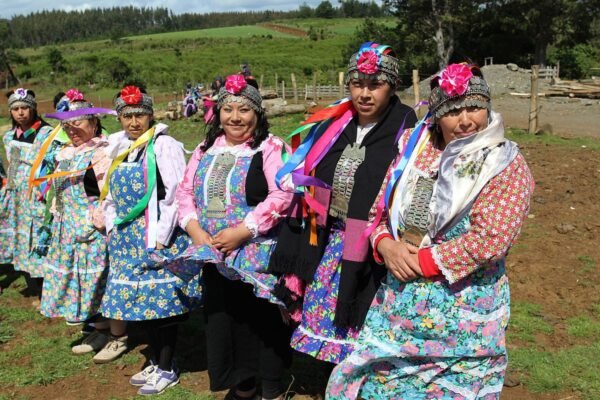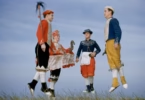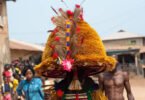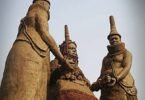
The Mapuche people, indigenous to South America, primarily inhabit regions in southern Chile and Argentina. Known for their resilience and deep connection to the land, the Mapuche have preserved their culture, language, and traditions despite centuries of colonisation and modern challenges.
This article explores fascinating facts about the Mapuche tribe, shedding light on their history, spirituality, customs, and unique contributions to the cultural landscape of South America.
1. The Name ‘Mapuche’ and Their Origins
The term Mapuche means “people of the land” (mapu = land, che = people) in their native language, Mapudungun. This name reflects their profound relationship with nature and their role as custodians of their ancestral territories.
Historical Presence
- The Mapuche are one of the largest indigenous groups in South America, with a history that dates back thousands of years.
- Their traditional territory, known as Wallmapu, extends across central and southern Chile and parts of Argentina.
Resilience Against Colonization
- The Mapuche resisted Inca expansion in the 15th century, maintaining their independence.
- During the Spanish conquest of the Americas, they were one of the few groups to successfully resist colonization for over 300 years through organized resistance and guerilla warfare.
2. Language and Oral Traditions
The Mapuche speak Mapudungun, a unique language that has no relation to other major South American languages.
Preservation of Language
- Mapudungun remains a vital part of Mapuche identity, though it faces challenges due to declining use. Efforts are underway to revive and promote the language, including its inclusion in educational programs.
Oral Traditions
- Storytelling plays a central role in preserving Mapuche history, myths, and cultural values. Stories often highlight their spiritual beliefs and connection to nature.
3. Spiritual Beliefs and Cosmology
The Mapuche worldview is deeply spiritual, revolving around a balance between humans, nature, and the cosmos.
Ngenechen: The Supreme Being
- The Mapuche believe in Ngenechen, a supreme deity consisting of four entities representing different aspects of life: creation, protection, fertility, and wisdom.
Machi: Spiritual Leaders
- Machi are shamanic figures who serve as healers, spiritual guides, and mediators between the physical and spiritual worlds.
- They use rituals, herbal medicine, and ceremonies to maintain harmony and address community needs.
Sacred Spaces
- Natural elements like rivers, mountains, and trees are considered sacred, serving as dwelling places for spirits and deities.
- Nguillatún is a significant Mapuche ceremony held to honor spirits, seek blessings, and ensure communal well-being.
4. Mapuche Art and Craftsmanship
Art is a vital expression of Mapuche culture, reflecting their identity and beliefs.
Weaving and Textiles
- Mapuche textiles, created on traditional looms, feature intricate geometric patterns symbolizing their cosmology and natural surroundings.
- Women, who are the primary weavers, pass down their skills through generations.
Silverwork
- The Mapuche are renowned for their silver jewelry, which holds cultural and spiritual significance.
- Items like trarilonko (headbands) and chaway (earrings) are often adorned with symbols representing the sun, moon, and other cosmic elements.
5. Cultural Practices and Social Structure
Mapuche society emphasizes community, respect for elders, and collective decision-making.
Lof: The Basic Social Unit
- A lof is a traditional Mapuche community, typically organized around kinship and shared land.
- Leadership within a lof is provided by a lonko, a chief who oversees social and cultural matters.
Community Gatherings
- Mapuche festivals and ceremonies are communal events that strengthen bonds and reinforce cultural values.
6. Resistance and Modern Advocacy
The Mapuche have a long history of resistance, both against colonial powers and contemporary challenges.
Struggles for Land Rights
- Many Mapuche communities continue to fight for the return of their ancestral lands, which were taken during the 19th-century Chilean and Argentinian expansion campaigns.
- Land disputes remain a significant issue, with the Mapuche advocating for recognition and respect for their territorial rights.
Cultural Revival Movements
- Efforts to preserve Mapuche culture include teaching the Mapudungun language, promoting traditional crafts, and sharing their history through media and art.
7. Traditional Cuisine
Mapuche cuisine reflects their agricultural heritage and reliance on natural resources.
Staple Foods
- Mote: Cooked wheat grains, often served as a base for dishes.
- Muday: A traditional fermented drink made from grains like wheat or corn.
- Sopaipillas: Fried bread made from pumpkin and wheat flour.
Sustainability in Food Practices
The Mapuche emphasize sustainable farming and foraging, respecting the land’s natural cycles.
8. Music and Dance
Music and dance play an integral role in Mapuche ceremonies and celebrations.
Instruments
- Kultrun: A drum used in rituals, symbolizing the universe.
- Trutruka: A wind instrument made from bamboo or wood, often used during communal events.
Dance Forms
Traditional dances are performed during ceremonies and festivals, often accompanied by rhythmic drumming and chanting.
9. Festivals and Celebrations
The Mapuche observe several festivals that honor their spiritual beliefs, agricultural cycles, and cultural heritage.
We Tripantu: The Mapuche New Year
- Celebrated during the winter solstice (June in the Southern Hemisphere), We Tripantu marks the renewal of life and the beginning of a new agricultural cycle.
- Rituals include offerings, prayers, and communal feasting.
Nguillatún Ceremony
This communal event involves offerings, music, and dance to seek blessings from deities and maintain harmony with nature.
10. Global Recognition and Contributions
The Mapuche people have made significant contributions to South American culture and continue to gain recognition for their resilience and heritage.
Influence in Literature and Art
- Mapuche poets and authors, such as Elicura Chihuailaf, have brought their culture to global audiences, sharing stories of their struggles and spirituality.
- Mapuche motifs and crafts are celebrated in global art and design circles.
Advocacy and Leadership
The Mapuche are at the forefront of indigenous rights movements in South America, inspiring global discussions on land sovereignty and cultural preservation.
Conclusion
The Mapuche tribe’s cultural and spiritual heritage offers a rich tapestry of traditions, values, and resilience. From their harmonious relationship with nature to their vibrant art and rituals, the Mapuche continue to inspire admiration and respect worldwide.
As they navigate modern challenges, the Mapuche remain steadfast in their efforts to preserve their identity, ensuring their legacy endures for generations to come.






